Conservation ..
There is a growing awareness and understanding of the importance of antique and historic pianos as well as other instruments. Greater numbers of people are seeking out these instruments and performances on them.
Antique and historical instruments played pivitol roles in the very music we enjoy today. In the early 1800's, Chopin composed and played on a piano considerably different than the modern piano we know today. In addition to Chopin's own tremendous talent, the differences in the pianos also inspired Chopin. These things are also true about Bach and any of the composers/pianists prior to 1900.
All of this is creating a growing interest in the preservation of these instruments original work.
This enriches our music today through broader education and the study of these instruments.
We are both privileged and pleased to be supporting these continuing efforts. Since 2006 we have supported the efforts of the Period Piano Center in CA through the donation of our time to document and photograph historical pianos. These efforts have taken us all over the United States, the Archives at the Smithsonian American History Museum and several countries in Europe. Something that surprised me was the enormous numbers of very historical instruments in private homes throughout the US.
On one such trip to Belgium, I had the opportinity to visit the Musical Instrument Museum in Brussells Belgium. I have posted a few photo's here
I have created a page for photo's of Theodore Steinway's German made Grand Piano Serial Number 181 Here. These were taken on the same trip to Belgium in 2007. My great thanks to Chris Maene for allowing us to visit his collection of which this Theodore Steinway grand is a part of.
Please stop by this page from time to time for updates and information. I will be looking at my collection of photo's for images I think may be interesting to our readers.
To begin, below are top and bottom views of an 1869 Erard 8' concert grand. This would have been during the time of Liszt and would not have the sound we are accustomed to today.
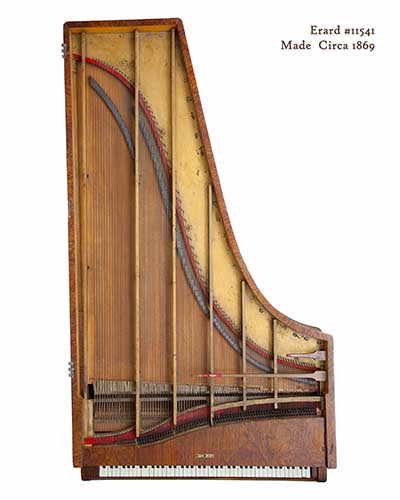 |
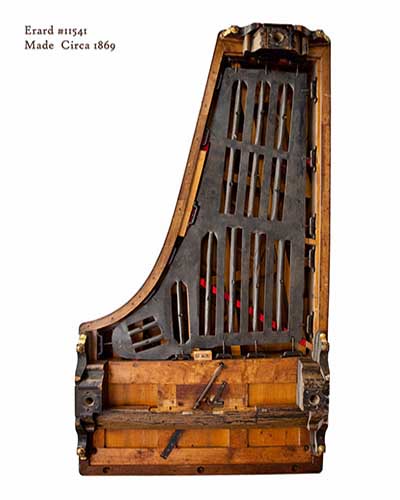 |
| In the above Erard photo on the Right, bottom plan view, please notice the iron panel fitted in the inderneath. Suspended by eylets from the sound board, this was an attempt to create the characteristic "American" sound being produced the instruments made in the United States at that time. | |
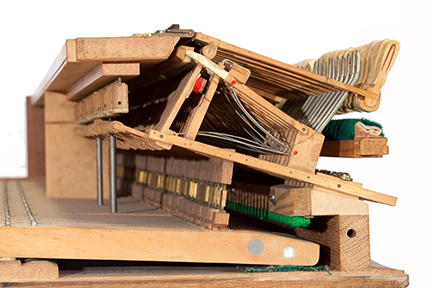 |
The French maker Erard, is credidited for the approximately 1820 invention of the double escapement repetition, shown on the left. This action was made in 1869. |
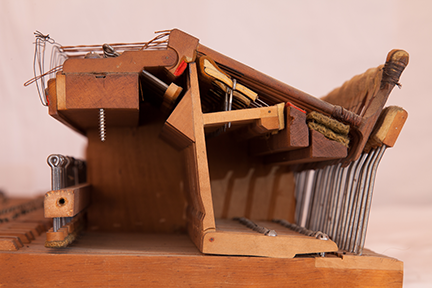 |
Shown on the left is a single escapement action from 1858. The double escapemtent repetition has been in use for thirty eight years and Henry Jr Steinway is still working on improvements to the "older technology". There is considerable inertia in the piano industry for what has always been. Pianists are used to the norm and know what to expect and how to react. Changes bring uncertainty. In performance settings, this means potential risk to reputation. |
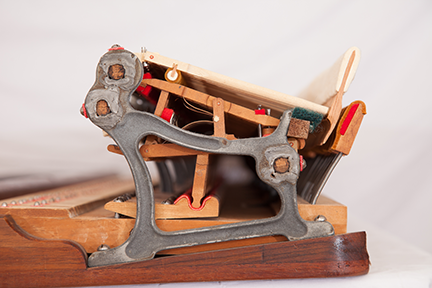 |
Here, in this 1860 Grand, Steinway has modified their key / key frame to accept the new brackets and rails now hosting the double escapement repetition. The addition of the repetition rail has forced designers to move the rocker to a less convenient point for adjustment. This action has the signs of having been retrofit from the otiginal Henry Jr. action to the new design by Steinway. I am not sure when this was done by Steinway. |
